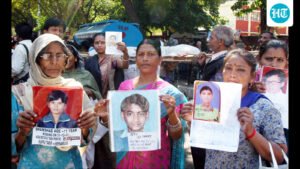
When the Supreme Court on Tuesday acquitted Surendra Koli in the final surviving Nithari case, it did more than just erase a conviction — it exposed one of the worst failures of India’s criminal justice system. Nearly two decades after the discovery of human remains from a drain behind a Noida bungalow shocked the country, no one now stands convicted for the rape and killing of at least 16 women and children. For the families who lost their children, there is no closure; instead, there is the confirmation of a collapse.

The apex court’s judgment, delivered by a bench comprising Chief Justice of India Bhushan R Gavai and justices Surya Kant and Vikram Nath, held that the 2011 conviction of Koli could not stand when he had been acquitted in 12 identical cases based on the same evidence, confession, and flawed investigation. To let one conviction survive, it said, would be a “travesty of justice.”
In doing so, the court upheld the principle that the rule of law must be consistent. But its verdict also makes stark the central flaw in the handling of the cases — the complete breakdown of investigative credibility, which has left the Nithari parents with nothing but unanswered questions.
In late 2006, what began as routine drain cleaning in Sector 31 of Noida turned into a nightmare. A child playing cricket had earlier spotted a human hand in a narrow strip between houses D5 and D6. When the drain outside the bungalows was dug up in December that year, multiple skulls, bones, and tattered children’s clothes surfaced, along with tiny slippers.
At the center of this horror were two men — Koli, a domestic worker at D5, and his employer, businessman Moninder Singh Pandher. The police claimed that Koli lured children and women to the house, murdered them, and in some cases, even indulged in cannibalism. Pandher was accused of complicity and exploitation. What followed was not just an investigation but also a frenzy, a swell of outrage that demanded answers. But no answers ever came.
The police investigation was chaotic and unscientific. By the time officers reached D5 on December 29, 2006, crowds had already gathered, trampling through evidence as remains were pulled from the ground. The “recovery” of a knife from beneath a terrace tank and several other items became the backbone of the prosecution, but later, the courts found these claims unreliable.
When the probe was handed over to the CBI in January 2007, expectations were high. But the agency repeated the same mistakes, relying heavily on Koli’s confession recorded after weeks in custody and on dubious recoveries already known to locals. There were no contemporaneous disclosure memos or credible forensic links tying Koli or Pandher to specific victims. In short, the CBI validated the tainted work of the local police instead of rebuilding the investigation from scratch.
The trials that followed rested almost entirely on this defective foundation. Confessions, recoveries, and circumstantial evidence were recycled across 13 cases with little effort to establish independent corroboration. It was hardly surprising when higher courts began overturning these convictions one after another.
The Supreme Court, in its November 11 judgment, painstakingly pointed out that the same confession and the same recoveries had been rejected as unreliable in all other cases. The bench said it found “no principled basis” to uphold one conviction when 12 others had already fallen on identical facts. It was a reaffirmation of the bedrock principle of criminal law that consistency and fairness must trump sentiment.
For the parents of the missing children, the verdict reopens old wounds. They were the first to report their children missing in 2005, the first to protest outside D5, and the last to be heard. Over the years, they were paraded before television cameras, promised justice, and fed hope. Today, they are left with the legal reality that nobody killed their children.
The court acknowledged this pain, observing with “deep regret” that despite years of investigation, the identity of the true perpetrators has never been established. It faulted the agencies for negligence and delay that “corroded the fact-finding process,” including their failure to explore other leads such as a possible organ trade angle. But this recognition offers little solace to families who have watched the State’s case collapse in courtroom after courtroom.
The Nithari acquittals are symptomatic of a deeper malaise in India’s criminal investigation machinery. At every level, the system failed. The local police failed to preserve a crime scene or collect credible forensic evidence. The CBI failed to correct those lapses or to pursue alternative theories with rigor. Prosecutors failed to build a coherent narrative capable of withstanding judicial scrutiny. And the State failed the victims by turning their tragedy into a procedural farce.
In a society where public outrage often substitutes for institutional accountability, the Nithari case stands as a cautionary tale. The gruesomeness of the crime cannot excuse investigative shortcuts, nor can emotion justify weak prosecution. The rule of law demands both fairness to the accused and justice for the victims. But in Nithari, both ideals have been betrayed.
With the Supreme Court’s latest verdict, Koli walks free, and Pandher remains absolved. The court has done what the law requires, for it cannot convict without proof beyond reasonable doubt. But the question lingers: How did the system allow a case of such magnitude to collapse so completely?
For the parents who still clutch faded photographs of their children, justice has turned into an abstraction. Closure is a luxury they cannot afford. In Nithari, the law has spoken its last word, but the silence that follows is deafening.
The views expressed are personal





